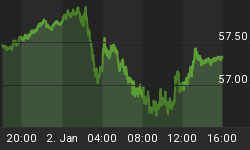The link from Wall Street to Main Street has always been interesting. Usually, it confounds the Main Stream as the stock market peaks and the economy keeps going up. Typically, the economy turns down 10 or 12 months later. Using data on the business cycle as determined by the NBER, this was the case when the tech mania completed in March 2000. In November 2001 the NBER declared that that recession started in March 2001-- twelve months after the stock market high.
The end of a bear market typically leads the turn up in business activity by 6 to 8 months. Those that act upon economic numbers tend to sell on the bad reports as the next bull market is getting under way.
The contrast between Main Stream Economics and market history tends to provide a rich harvest of irony.
However, if ever there is a time when "This time it is different!" works is at the completion of all six great financial manias from the first in 1720 to the most recent in 2007. The business recession starts virtually with the bear market for stocks. On the earlier examples the record is from newspapers of the day as well as from individual diaries or journals.
The NBER data begins in the 1850s and the 1873 Bubble began its collapse in that fateful September and the recession started in that October.
The stock market peaked in September 1929 and the recession started in that August.
As noted, the high for the stock market was in October 2007 and the recession started in that fateful December. Close enough to fit the pattern.
It is worth noting that where the evidence exists, the climax of each great financial mania was anticipated by the change in the yield curve from inverted with the boom to steepening with the initial crash in the stock market. Furthermore all great bubbles prior to the most recent were followed by long contractions in the order of twenty years. The description "Great Depression" appeared in the literature in 1884. That Great Depression ended in 1895. (For further details please Google "Great Depressions Are So Methodical")
On the nearer-term, it has been logical that when the big rebound out of the 2007 to 2009 crash started it would be accompanied by a rebound in business activity. This has been the case and this historical reasoning applies to the rebound high in the stock markets. Our April 22 edition of Pivotal Events included our Check List For An Important Top and concluded that the decline in the stock market would be accompanied by an immediate slowing of business activity.
Many orthodox economic reports have been weakening and the Economic Cycle Research Institute (ECRI) publishes a Weekly Leading Indicator Index (WLI). This has nicely filled in the huge gap between announcements by the NBER.
The following chart shows a remarkable plunge to -10.7. Remarkable because anything below -10 says "Recession".

Annotations by Mish's Global Economic Trend Analysis
Of interest is that the NBER has not determined that the recession that began in December 2007 is over. If it was possible, the report would be made about a year after the business rebound began in March 2009. Perhaps relentlessly high unemployment is preventing a happy announcement from the NBER?
Disturbingly, continuous reports from ECRI are now confirming a rapid decline in business activity that transfers the debate about a "Double Dip" economy from practical to academic.
Over the past few weeks the media have been celebrating the recovery in Euroland.
Our concerns became focused upon change when the Baltic Index (BDI) broke down in early June. The plunge since has been severe and faster than the one in June 2008. We took that one as warning on the financial markets as well as upon business activity.

At such times, the BDI has been a reliable indicator on weakening international trade. While the equivalent in Europe to the ECRI is not yet being worried about, the Baltic links America's ECRI to the rest of the world.
Our case that the economy would decline virtually with the stock market seems to be working out. This means that financial history is still within a fairly typical post-bubble contraction that could run for a number of business cycles. Possibly each contraction would be severe and each expansion would be modest.
Once past the April high in the stock market, our technical work leads to another liquidity crisis in the fall. This would dramatically confirm that the forces of a post-bubble contraction are again trumping governments' attempts to reflate prosperity.
In which case, the "stimulus" did not work and interventionist economics has suffered another intellectual and practical failure.
In so many words, Main Stream Economics will be ground between the millstones of Wall Street and Main Street.
















